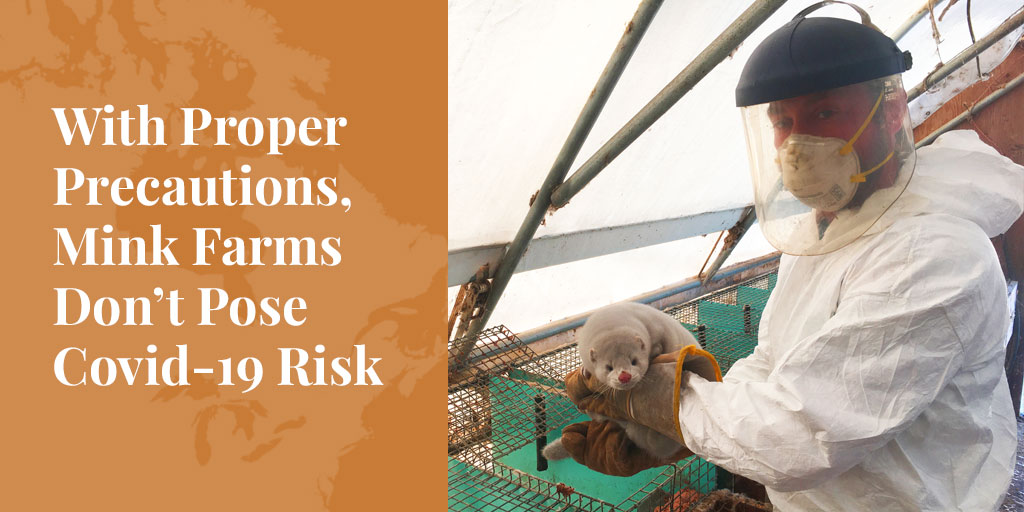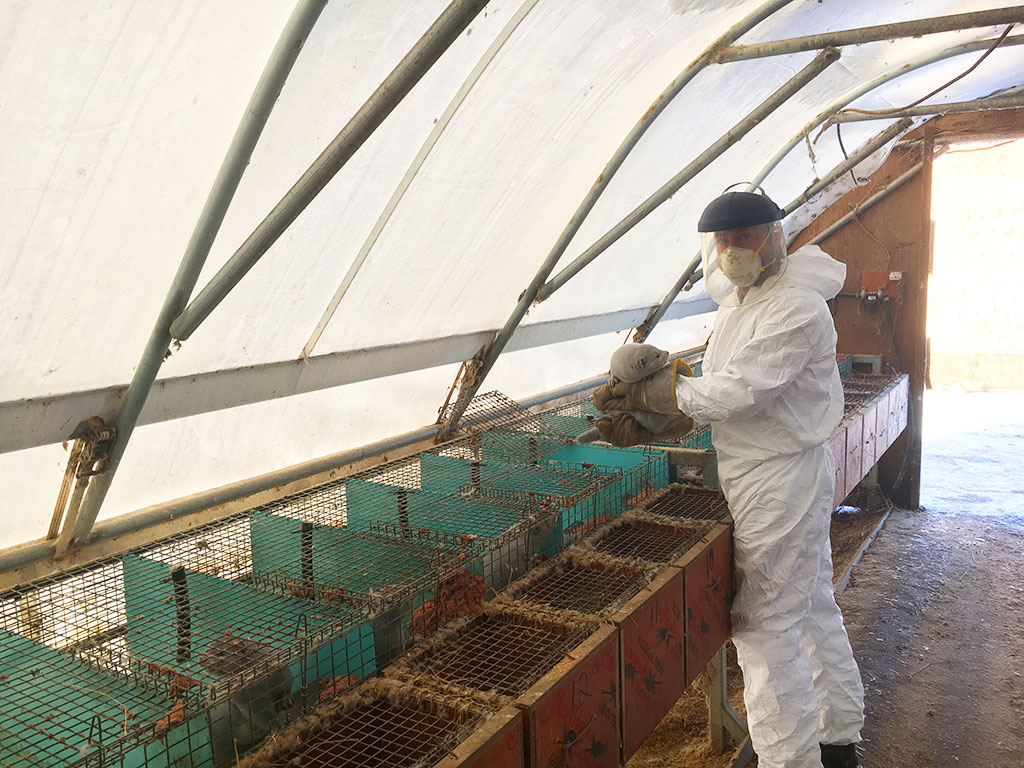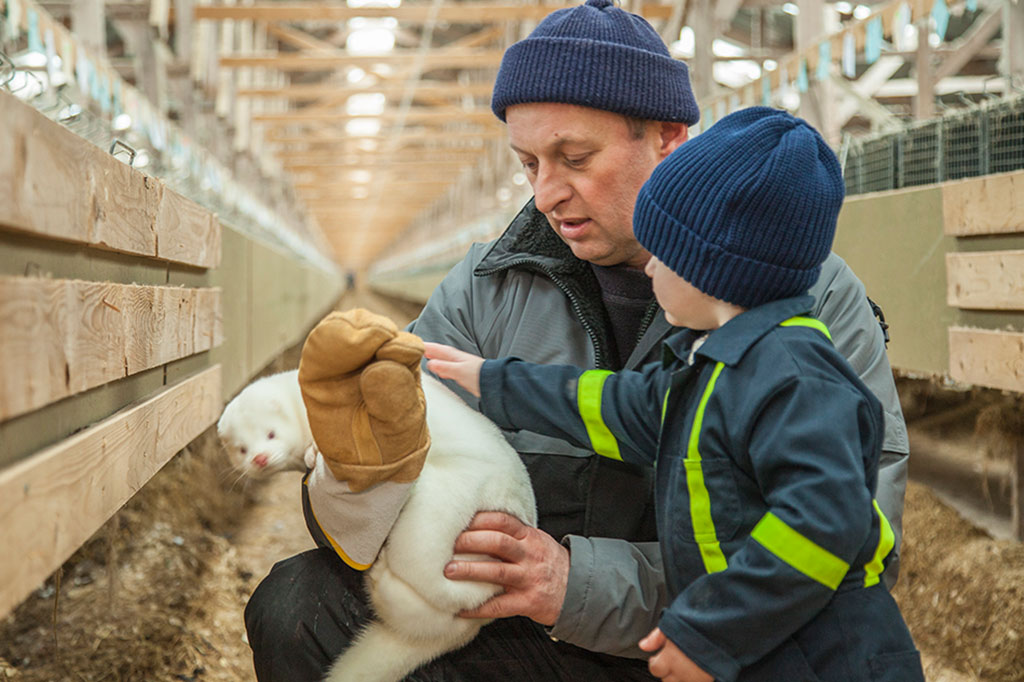
Quick to turn the misfortune of others to their own benefit, animal activists have jumped on reports about Covid-19 on mink farms in Europe (and some US states) to call for a complete ban on fur farming in North America. In media interviews and opinion pieces they are sounding the alarm that the SARS-CoV-2 virus mutated in Danish mink and, in some cases, was passed back to humans; this new mink-related strain could threaten the efficacy of future vaccines, they argue. Their fear-mongering received a boost when the Danish Government ordered the culling of millions of mink, citing the same concerns.
SEE ALSO: Covid-19 scaremongers wrong to pick on mink farms. Truth About Fur.
In fact, most public health authorities do not agree. The European Centre for Disease Prevention and Control issued a statement on November 12 in which it concluded that the overall level of risk to human health posed by SARS-CoV-2 mink-related variants is low for the general public, no different than other (non-mink) strains. (1)
World Health Organisation chief scientist Soumya Swaminathan said that “mutations [in viruses] are normal … I don’t think we should come to any conclusions about whether this particular mutation is going to impact vaccine efficacy.” WHO spokesperson Dr. Margaret Harris added that some members of the international community and the media have misunderstood the threat level. (2)
Similarly, respected US virus expert Dr. Anthony Fauci said: “It does not appear, at this point, that that mutation that’s been identified in the minks is going to have an impact on vaccines and affect a vaccine-induced response.” (3)
The World Organisation for Animal Health (OIE) stated that “although several animal species have been infected with SARS-CoV-2, these infections are not a driver of the COVID-19 pandemic; the pandemic is driven by human to human transmission.” (4)
Preventative Measures

The OIE does not propose mass culling of mink herds, let alone an end to mink farming. Rather, it advises a range of preventative measures including human testing; infection prevention and control for workers; animal testing and prevention of spread from animals; and the development of preparedness and response strategies. These are precisely the precautions that US and Canadian mink farmers have implemented to protect their animals, their own families, and the public.
North American mink farms, like most animal agriculture, maintain biosecurity protocols to prevent the spread of infection from wildlife or other farms. These measures were immediately tightened when it was learned that mink in Europe had contracted Covid-19 from humans. Only essential personnel are permitted onto farms, and workers who feel ill must be tested for Covid-19 before coming into contact with the animals. Masks, visors, and gloves are used when handling mink. If Covid-19 is found on a mink farm, this must be reported to the state or provincial chief veterinary officer and public health authorities, who decide whether further measures are required.
“The European situation gave us lead time to put stricter biosecurity into place,” said Matt Moses, a Nova Scotia mink farmer and president of the Canada Mink Breeders Association. No cases of Covid-19 have been found on Canadian mink farms, and while some cases were recently found on US farms, they appear to have been rapidly and effectively contained.
Mink farming is also very different in North America than in Europe. While some 3 million mink are being produced annually on about 200 farms spread out across Canada and the US, in Denmark, more than 1,200 farms were producing over 17 million mink in an area smaller than Vancouver Island — or less than one-fifth the size of Wisconsin. The risk of inter-farm contagion is clearly far lower in North America.
Meanwhile, the “Cluster-5” Covid-19 mutation found on Danish mink farms has not been detected since mid-September, and has “most likely become extinct,” the Danish Health Ministry admitted last week. (5)
Neither “Cruel” Nor “Unnecessary”

None of this has dampened the enthusiasm of animal activists who sense an opportunity to deliver a body blow to the fur industry. There is no justification for taking even the smallest risk, because fur farming is “cruel” and “unnecessary”, they argue.
Cruel? In fact, animal welfare is a priority on North American mink farms. Producers work hard to provide their animals with excellent nutrition and care, as this is the only way to produce top-quality fur.
Unnecessary? Fur today is a sustainably-produced, hand-crafted, long-lasting, recyclable, and ultimately biodegradable, natural clothing material.
By contrast, the fake furs and other synthetics proposed by animal activists are generally made with petroleum, a non-renewable and non-biodegradable resource. These synthetics represent about 80 percent of our clothing, and leach millions of micro-particles of plastic into our waterways each time they are washed; plastics now being found in marine life. Cruelty-free indeed!
Mink are raised on small, family-run farms, supporting employment in rural communities. Mink help to reduce waste: they are fed left-overs from our own food production, the parts of cattle, poultry, and fish we don’t eat — by-products that might otherwise end up in landfills. Mink manure, straw bedding, and carcasses are composted to produce organic fertilizers, replenishing the soil and completing the agricultural nutrient cycle.
As for the new risks posed by Covid-19, mink farmers take their biosecurity responsibilities very seriously, to protect their livelihoods, their animals, and their families. Of course, no one is obliged to wear fur — or leather, or wool; or to eat meat or dairy — but that does not give activist groups the right to unfairly attack the livelihoods and reputations of North American farming families.
NOTES:
1) Detection of new SARS-CoV-2 variants related to mink. European Centre for Disease Prevention and Control, November 12, 2020.
2) What’s the science behind coronavirus? BBC, November 9, 2020.
3) Dr. Fauci says it appears Covid strain from Danish mink farms won’t be a problem for vaccines. CNBC, November 13, 2020.
4) Questions and answers on COVID-19. World Organisation for Animal Health, updated November 27, 2020.
5) Danish government may exhume hundreds of thousands of dead minks and burn them. Washington Post, November 27, 2020.
***
To learn more about donating to Truth About Fur, click here.










